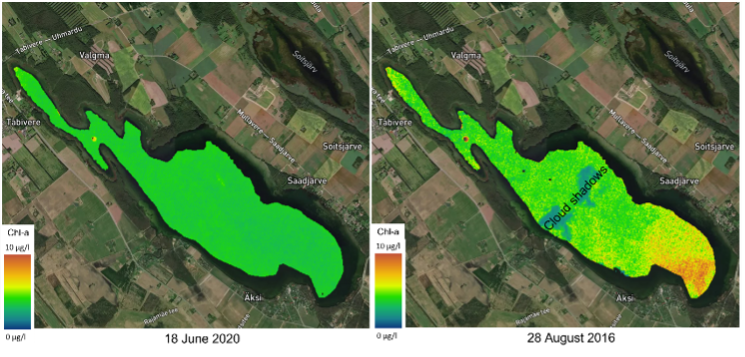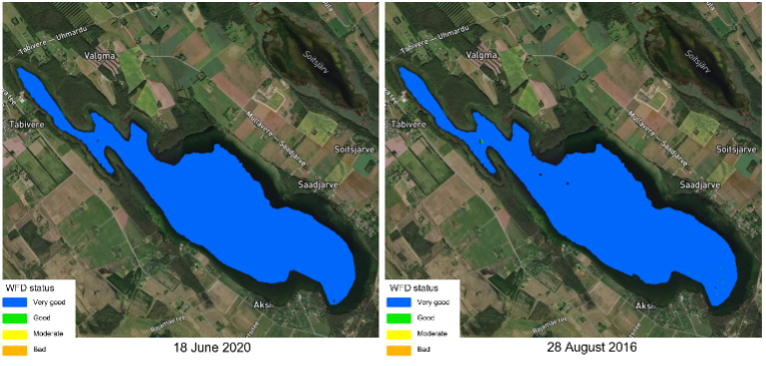Water managers (combined: EMÜ and others) appreciate the maps for: · cheap and automated monitoring for under-sampled lakes, combined with targeted sampling in case of unexpected changes · systems analysis, for which the spatial component is key · evaluation of the spatial effect of measures taken to improve water quality for the WFD as input for spatial ecological models

Figure 1Satellite-based EO maps confirm that Saadjärv is usually a lake with low Chl a concentrations over the whole surface (example from June 18th 2020). Still, sometimes slightly elevated concentrations of Chl a can be detected in a spatial pattern (example from 28th August 2016).

Figure 2Satellite-based WFD classification maps based on satellite EO Chl a concentrations. Although for most of the times lake WFD class is ‘very good’, for a few pixels the class changed from ‘very good’ to ‘good’ on 28th August 2016. |